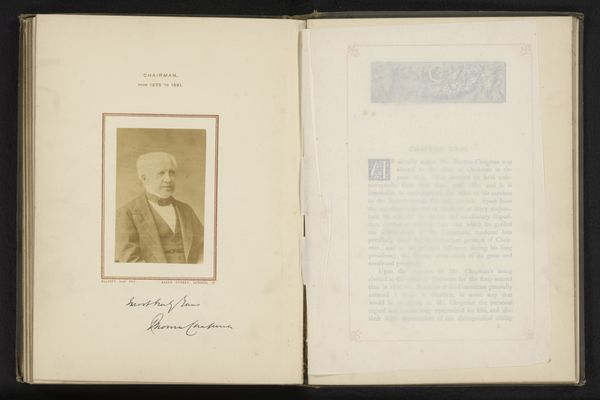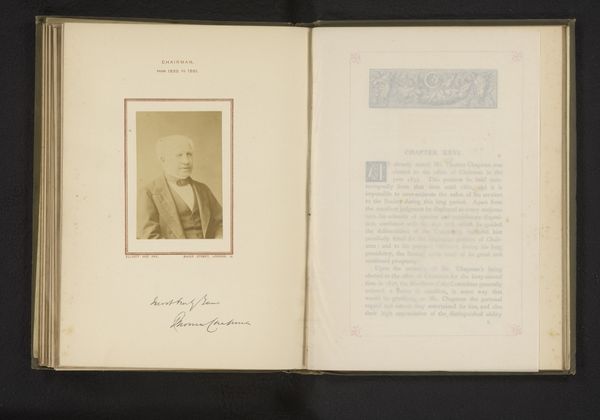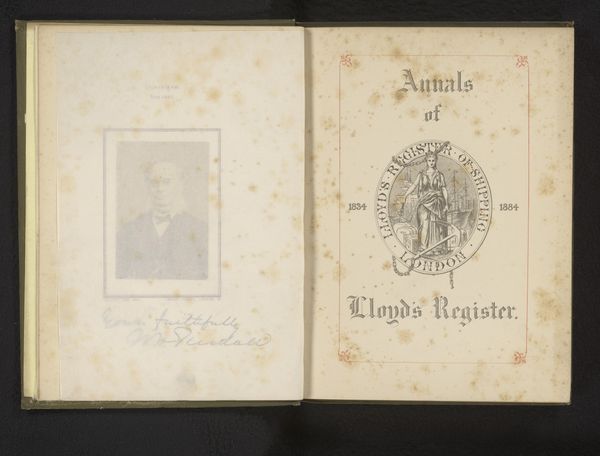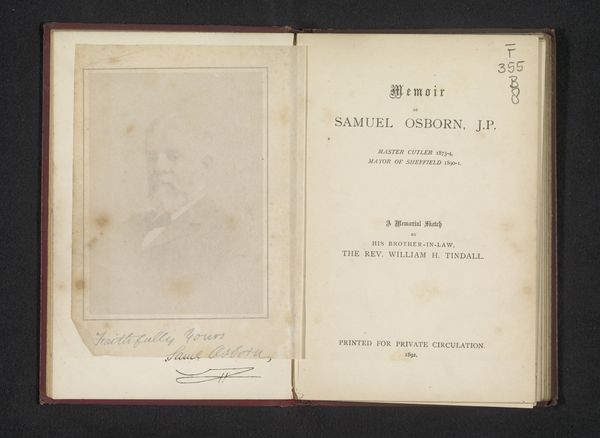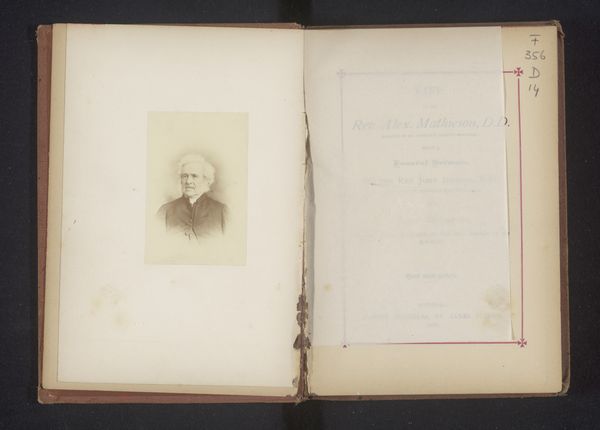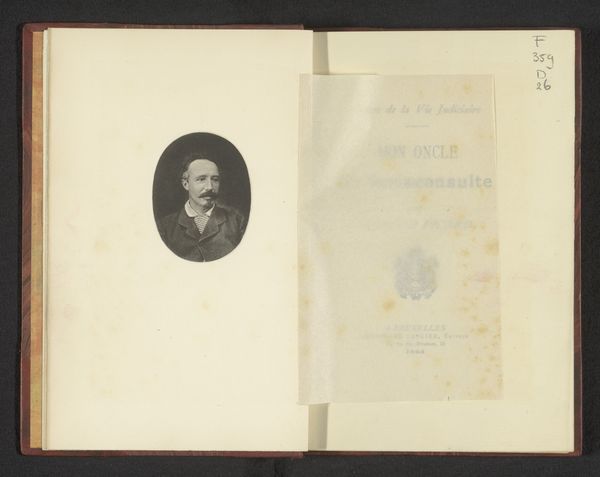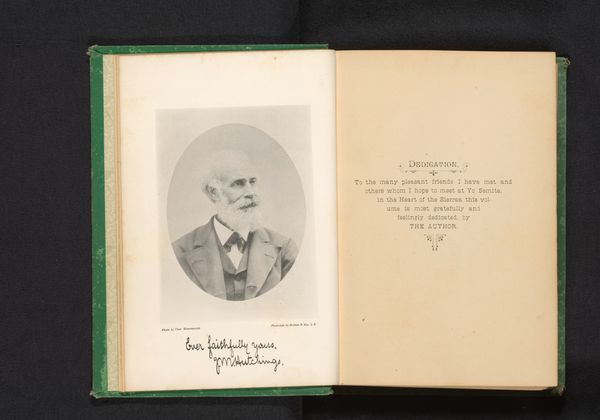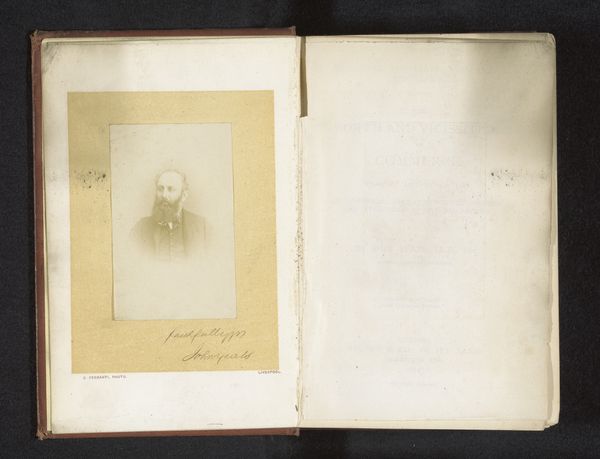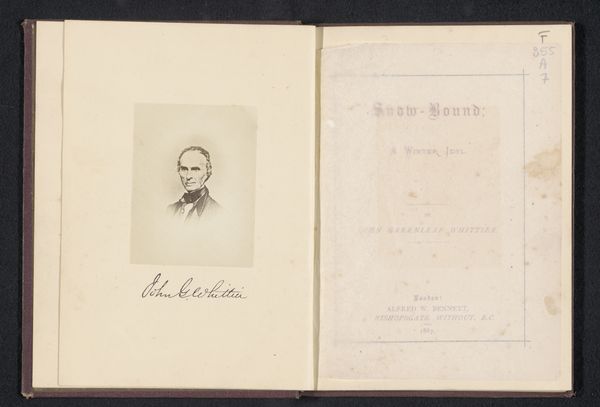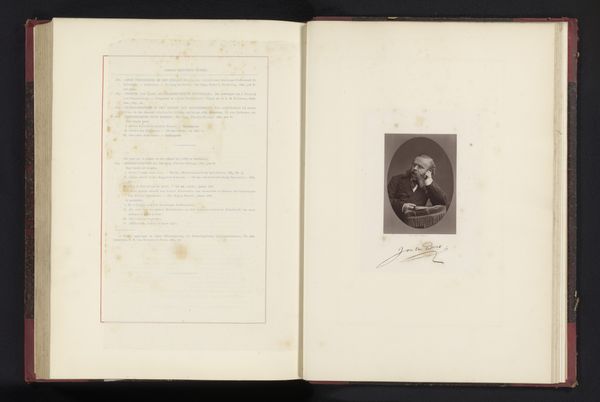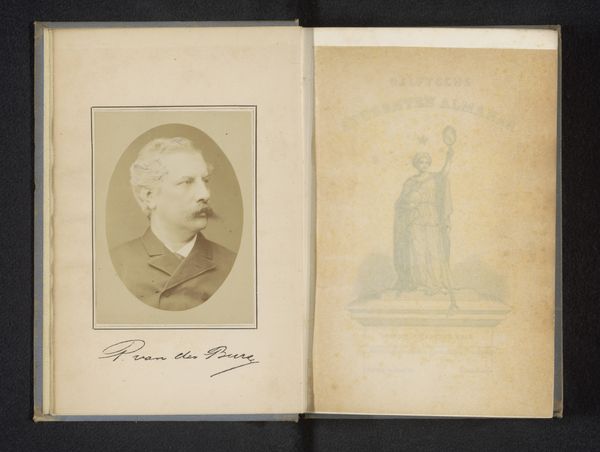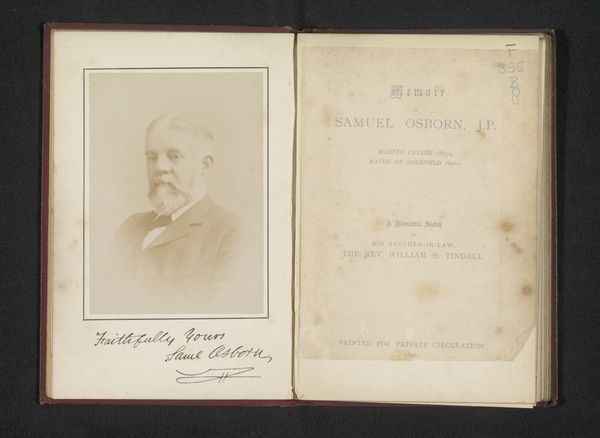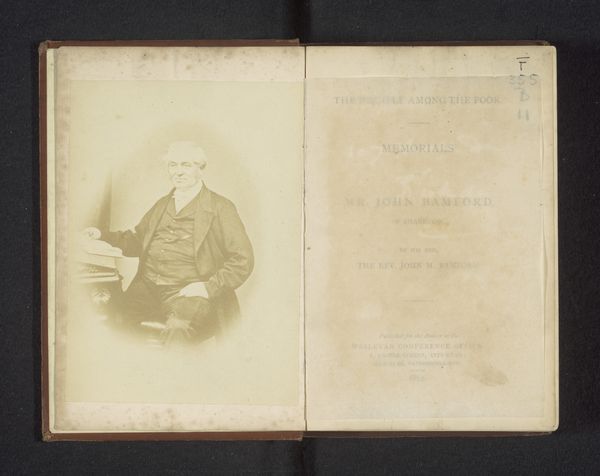
photography, gelatin-silver-print
#
portrait
#
photography
#
gelatin-silver-print
Dimensions: height 93 mm, width 60 mm
Copyright: Rijks Museum: Open Domain
Curator: Let’s examine this “Portret van een onbekende man,” or "Portrait of an Unknown Man", which was completed before 1884, using a gelatin silver print photography method. Editor: The first thing that strikes me is the almost sepia quality, a result of the printing process no doubt, lending it an air of wistful solemnity. The composition feels classical, with the sitter's gaze and posture both conveying authority and perhaps a hint of melancholy. Curator: Exactly, and if you look closely, the social context of photographic portraits during this period—taken by Elliott & Fry—was all about the burgeoning middle class. It speaks to an aspiration for permanence and respectability. It immortalized individuals previously only represented through painted portraits of the aristocracy. Editor: I’m intrigued by the soft gradations of tone; the light subtly sculpting the planes of his face, creating form from minimal contrast. This man is pictured formally wearing a suit coat, vest, bow tie, and pocket square. Visually it's as though the very image aspires toward refinement. Curator: Absolutely, consider that photography studios like Elliott & Fry were crafting a specific public image. By understanding photographic process, presentation, and commissioning—we glimpse the subject’s ambition to inscribe his image into public record, as someone who mattered. This one ended up on the Chairman of the Annals of Lloyd's Register, 1884 edition. Editor: There's a tension, though, isn’t there? Despite the formality, I find a sense of introspection in the figure, a complexity not always found in these types of early photographic portraitures. Perhaps the tonality draws me closer to an appreciation of his internal presence. Curator: Indeed, it invites contemplation about the individual within the broader historical moment. Whose gaze truly claims its narrative? How far can image-making serve as social documentation and public image production? These considerations highlight just how multilayered each image really is! Editor: From a formal point of view, studying the play of light allows me to grasp the subtle nuances of character and expression and how even something functional such as light creates an intimacy between the artist and sitter. Curator: Thank you for enriching our experience and reminding us to look closely, and ask about whose history art reflects and silences.
Comments
No comments
Be the first to comment and join the conversation on the ultimate creative platform.
